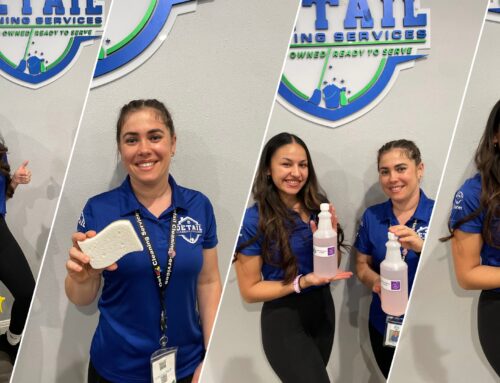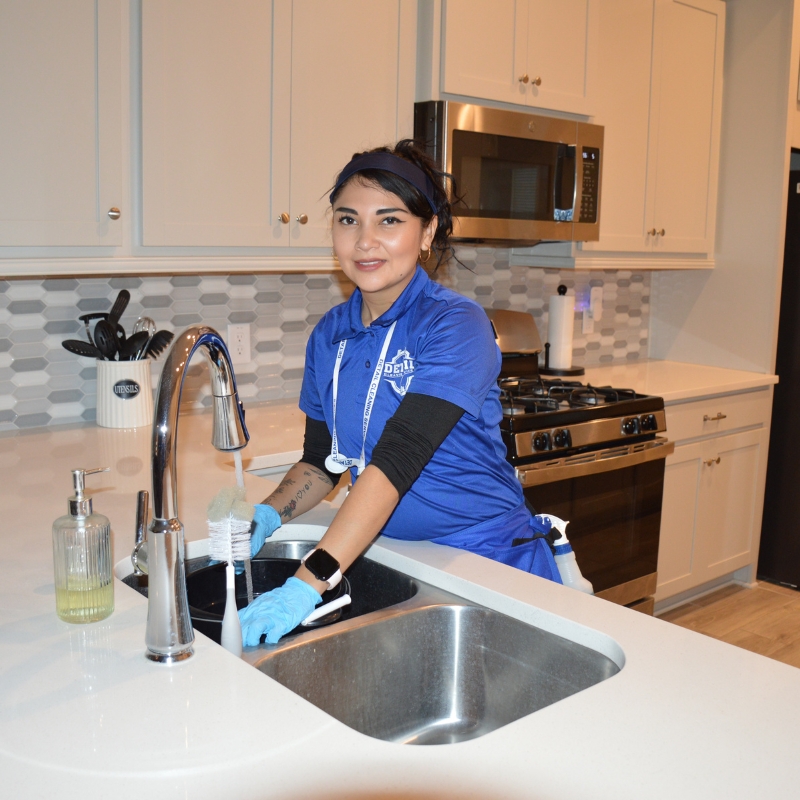
Ultimate Guide to Simple, Non-toxic Homemade Cleaning Products
Did you know the average family pays as much as 0 per year on cleaning products? Making your own household cleaning products is a way to avoid the potentially toxic chemicals in commercial chemicals as well as save you money. When you make your own homemade cleaning products, you are caring for the planet and those in your household.
Wondering how to make the switch to DIY non-toxic products? Keep reading because this guide details the key ingredients you need and how to use them to your advantage.
Ingredients to Make Your Own Cleaning Products
Chances are, you likely already have everything your need to make your own cleaning products at home. Here is a list of base ingredients that will help you make a lot of different non-toxic cleaning products.
1. White Vinegar
Near the top of just about any list for how to make your own household cleaning products is white vinegar. White vinegar is a cleaning powerhouse as it contains about five percent acetic acid.
Acetic acid can neutralize some strains of common household bacteria, dissolve hard-water stains, remove laundry stains, tackle rust, and clean glass and stainless steel.
2. Baking Soda
Baking soda is another cheap household staple that has been used as a cleaning product for ages. The basic power is capable of dissolving grease, dirt, grease, and stains. It can also be mixed up into a gentle exfoliant.
3. Castile Soap
If you’ve ever seen the very busy labels of the castile soap bottles by Dr. Bronners, you know they boast eighteen uses for their soap. Castile soap is a vegetable-based soap non-toxic, biodegradable, and useful effective FOR bodies, household cleaning, and even giving your pets a bath.
Some of Dr. Bronner’s suggested uses for castile soap are hand and body wash, laundry soap, dish soap window cleaner, and all-purpose cleaning.
4. Citrus
Have you ever wondered why many cleaning products smell like lemon, orange, or grapefruit? It may be because citrus is a powerful cleaning component. Citrus, especially lemons, are effective degreasers and work well alongside other natural ingredients like baking soda.
5. Essential Oils
Essential oils have found a spot in many areas in the home, including alongside cleaning products. They can be used to add a nice scent to freshly cleaned spots and even brings some antimicrobial properties.
Mixing Up The Best Non-Toxic Home Cleaning Products
Now that you know what ingredients to use to make your own non-toxic household cleaners, you should know the best combinations. Let’s start with some white vinegar solutions.
White Vinegar + Water
Add two parts white vinegar to one part water in a spray bottle. This solution is useful for removing hard water stains, soap scum, and a homemade glass cleaner. Dilute the solution further to use it on unwaxed linoleum floors, inside the microwave, and countertops (unless they’re marble).
White Vinegar + Baking Soda
When white vinegar and baking soda mix with each other and create a bubbly, fizzy reaction that makes a great cleaning product. You can use a paste of white vinegar and baking soda to remove stains in carpet fibers. Similarly, toss in a cup of vinegar and half of a cup of baking soda in with your next load of laundry to brighten your whites.
Baking Soda + Water
You can sprinkle baking soda on your stovetop, stainless steel pots and pans, or sheet pans, to cut grease. Add a layer to greasy or hard-to-clean surfaces and allow it to sit for a few minutes. Then, take a damp soft washcloth or sponge and wipe it down.
Foul odor coming from your garbage disposal? Dump around a quarter to half of a cup of baking soda slowly down your kitchen drain and run warm water.
Baking soda is even gentle yet powerful enough to remove stains on painted surfaces or walls. In addition, it can rub away crayon marks without damaging anything underneath.
Castile Soap + Water
When you use castile soap for cleaning, you will often dilute it. To use it as an eco-friendly floor cleaner, mix one-eighth to a quarter of soap with hot water. Use the solution with a microfiber mop, but avoid waxed floors and hardwood.
If you don’t like using commercial detergents to wash your clothes, add one-third to a half of a cup of castile soap. For optimal cleansing, add half of a cup of vinegar during the washer’s rinse cycle.
Lastly, to clean your toilet, one part castile soap to four parts water in a spray bottle. Spray the toilet bowl well and let it sit for ten minutes or so. Then, use a brush to scrub the bowl and flush.
Lemon + Water
To clean your microwave, add the juice of a freshly squeezed lemon and to a shallow bowl of water. Place the bowl in the center of the microwave and heat it for five minutes. Wait an additional five minutes and use a sponge to wipe down the walls and microwave door.
Lemons are also great stain removers. Take lemon juice or half of a fresh lemon and rub it against stains in plastic storage containers and let it sit for fifteen minutes to remove food stains and unpleasant odors.
Essential Oils
Did you know that some essential oils have natural antimicrobial and antibacterial properties? One of the most commonly used oils in cleaning is tea tree oil. Tea tree oil
Tea tree oil has some antiseptic, antifungal, and antibacterial properties. You can add a few drops to a one-to-one ratio of white vinegar and water solution for extra cleaning power and a refreshing smell.
Note: Many essential oils are toxic to pets like dogs and cats and should be avoided or used with caution.
Making Your Own Homemade Cleaning Products Is Simple
The benefits of making your own homemade cleaning products are clear. You will be cutting down your exposure to potentially toxic chemicals from commercial cleaners. They’re better for the environment and budget-friendly.
If you’re not sure where to start with non-toxic cleaning or you need a little help, get in touch and get an instant online quote for cleaning services.
Share this article
Follow us
A quick overview of the topics covered in this article.










